[REC] (2007)
A TV reporter and cameraman follow emergency workers into a dark apartment building, only to be locked inside with something terrifying.
![[rec] (2007)](https://www.framerated.co.uk/frwpcontent/uploads/2021/01/rec07-978x652.jpg)
A TV reporter and cameraman follow emergency workers into a dark apartment building, only to be locked inside with something terrifying.
![[rec] (2007)](https://www.framerated.co.uk/frwpcontent/uploads/2021/01/rec07-978x652.jpg)

There’s only a handful of movies that prompt visceral reactions the way pseudo-documentaries do. Their conceit is that we’re watching something captured and experienced by real people that’s raw and unedited. Considered the grandfather of the found-footage genre, Cannibal Holocaust (1980) was mired by real-life controversy once released. Audiences believed the film was real and its director, Ruggero Deodato, was duly arrested and charged with several counts of murder.
Following the incredible success of The Blair Witch Project (1999), a plethora of imitators attempted the found-footage formula. Although several prevailed, such as Paranormal Activity (2007), many failed to blur the lines between reality and fiction adequately, eventually vanishing into mediocrity. However, co-directors Jaume Balaguero and Paco Plaza injected much-needed life into the genre with the Spanish horror [Rec]. In a decade when horror was slowly becoming overshadowed by New French Extremism such as Irreversible (2002) and High Tension (2003), [Rec] reminded the world that Hispanic horror can match the supernatural frights and vicious brutality of their neighbours.
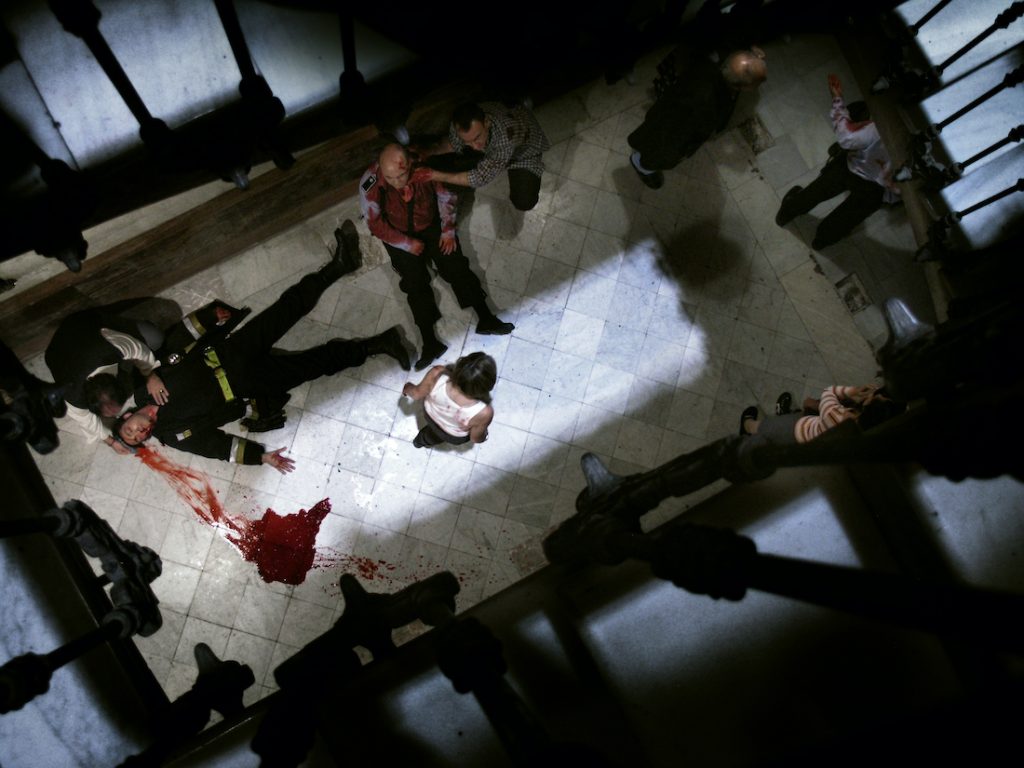
A reporter named Angela (Manuela Velasco) and her cameraman, Pablo (Pablo Rosso), are filming a documentary series called While You’re Asleep. Their episode focusses on the twilight activities and daily struggles of firefighters at the Barcelona fire station. After meeting a local squad of firemen and several routine interviews, they receive a call that requires urgent attention: an elderly woman has fallen in an apartment complex and is in need of medical attention. When investigating the apartment, what they find is a hysterical person, covered in blood, highly agitated, or perhaps infected. What was supposed to be a routine call quickly spirals out of control, as Angela and Pablo find themselves in the epicentre of a mysterious, deadly, highly contagious disease.
Originally beginning her career as a TV presenter for the Spanish show Cuatrosfera (2005), Manuela Velasco is perfectly cast as our lead protagonist Angela. As the host of While You’re Asleep, the actress’s naturalistic performance transposes the movie into a television broadcast. She suits her role perfectly bringing a sense of realism to her character, infusing Angela with a charming personality. She’s instantly personable and cheery, particularly in the beginning when she’s joking with the firefighters and playing basketball at the station. As the story unravels, her urgency to accurately document the traumatic events is admirable. She exclaims “we have to show them everything” as she demands Pablo to keep the camera rolling. Admittedly, her overly joyful persona may be irritating to some. However, she reacts to the situation escalating around her admirably, making her a strong female lead at the heart of the chaos.
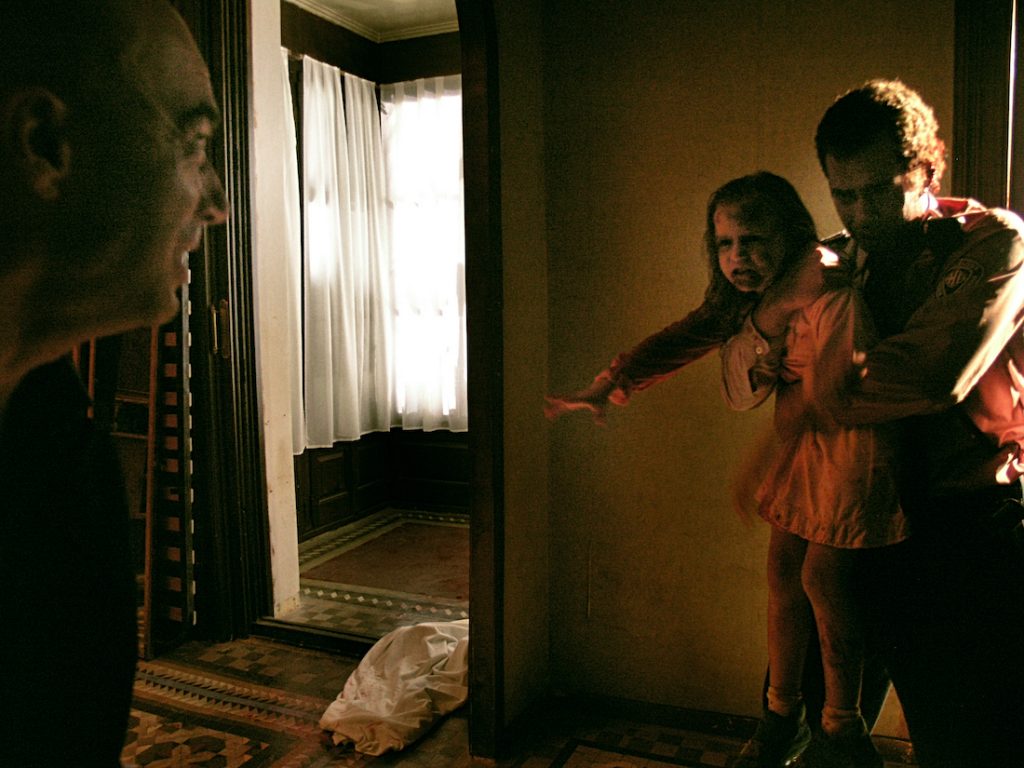
The supporting cast is made up of largely unknown actors hired for their improvisational skills. From the old couple arguing with themselves to the child (Claudia Silva) and protective mother (Maria Lanau), each actor is believable. Arguably the most enjoyable secondary character is Cesar (Carlos Lasarte) and his standout scene occurs when Angela interviews him. Clearly delighted at the idea of becoming famous, he begins preparing to look his best, combing his hair and wiping his sweaty brow, then making numerous xenophobic comments about the family living above him. With pure terror in his eyes, he starts blaming the family for the outbreak because they eat raw food. After being informed the camera’s been recording the entire time, his entire demeanour changes. He puts his finger on his chain and poses to look educated and important for the audience. It’s only a subtle moment but Cesar’s presence is hilarious.
Using the same device employed by The Blair Witch Project, co-directors Balaguero and Plaza create an adrenaline-fuelled addition to the horror genre. While many movies have attempted this approach including The Zombie Diaries (2006) and Cloverfield (2007), one would argue they lack a degree of authenticity. The success of found-footage movies depends on the notion of whether one believes that you’re watching unmediated footage of something that actually happened. That’s where [Rec] works beautifully because it genuinely feels like we’re watching a documentary gone wrong. By placing a news crew at the heart of the story, it also legitimises the reason for the events to be documented. There’s a brief scene featuring Angela and Pablo interviewing the suspicious residents about the events occurring. As the characters express their concerns, it feels like they’re including the audience in their plight. [Rec] carefully considers how all of these elements work in unison, creating an immersive experience that genuinely feels like real footage.
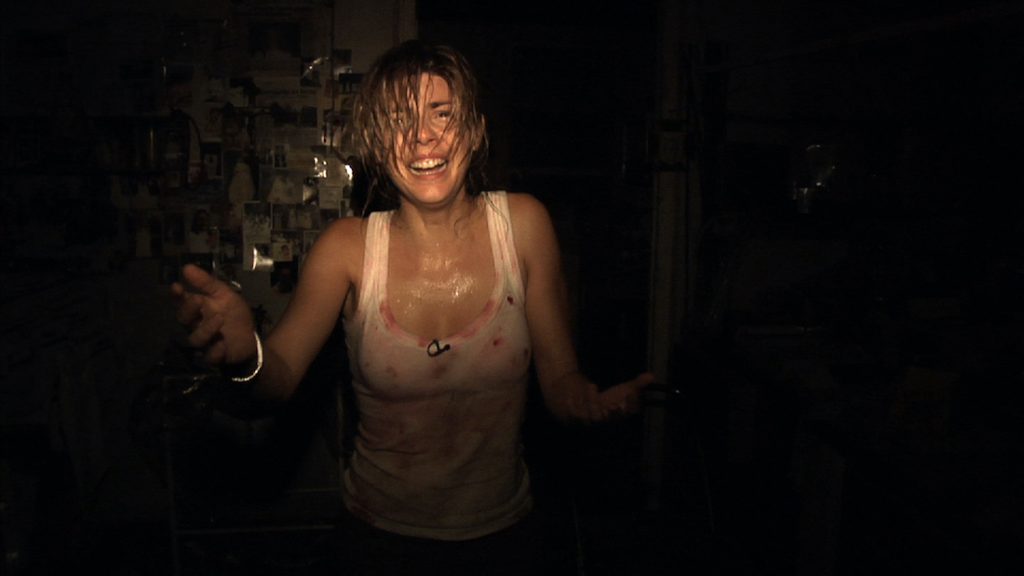
Trapped in a quarantined building with a contagious disease is a terrifying premise, and the directors make the most of their material. Produced with a budget of $2M, the majority of the tension is developed through the simplest and cheapest means. [Rec] draws upon the best elements of its contemporaries, seamlessly creating a consistently dangerous and claustrophobic atmosphere. It’s clear the filmmakers are familiar with the expectations of horror, consistently utilising the aesthetic in both style and effect. The use of obscured visuals, inhuman shadows creeping out of the frame and incoherent lighting thrusts one into the mayhem. The building’s spiral stairwell and the labyrinth of corridors create a disorientating composition evoking David Cronenberg’s Shivers (1976). An incredibly haunting scene occurs as the camera peers downwards from the top of the stairwell. In the darkness we see numerous zombies begin staring towards the camera. It’s simply harrowing in its simplicity and effect.
The success or failure of [Rec] solely depends on one’s enjoyment of its handheld camera aesthetic. However, the chaotic nature of the visuals unquestionably adds an explosive pace to the already intense atmosphere. During its mere 80-minute runtime, Balaguero and Plaza successfully create several unique moments that each have its own individual merits. Cinematographer and co-star Pablo Rosso (Sleep Tight) heightens the horror with staging that feels fortuitous. A particular sequence follows our protagonists into the attic until they’re trapped with a zombie in a darkened room. Through the narrow sphere of sight, we briefly witness a monster that evokes similarities of the titular character from Chris Cunningham’s Rubber Johnny (2005). Using the camera’s night-vision, we see Angela desperately keeping quiet as the monster blindly searches the room. What occurs is incredibly harrowing and gruesome, but captured with similar intensity as Neil Marshall’s The Descent (2005).
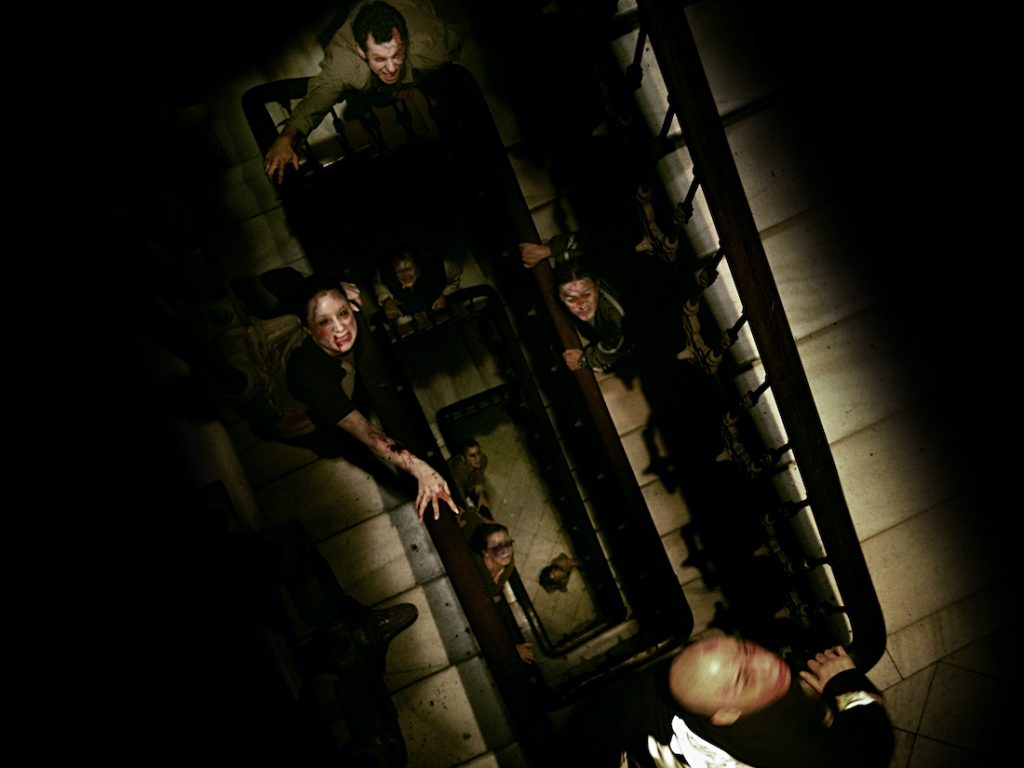
Interestingly, while developing the concept of [Rec], Balaguero and Plaza showed no interest in the found-footage formula. Regardless, the filmmakers believed that realism was the most important ingredient in horror, and created [Rec] accordingly. Knowing only true horror would translate best on-screen, Balaguero and Plaza used a number of improvisation techniques to generate true fear in the actors. In order to disorientate the cast, they would frequently shoot long sequences with no breaks, These scenes would often run over 20-minutes in length in order to keep the actors emotionally exhausted. Additionally, the cast was apparently unaware of several jump-scares the directors had planned for them. One sequence involving a firefighter falling down a stairwell was unscripted. The filmmakers intended to create a genuine reaction to the peril. Throughout we witness the actors endure a haunted house experience, giving [Rec] a layer of realism lacking from many other horror movies.
As the story progresses, we’re quickly trapped with residents infected by a ravenous zombie virus. While [Rec] dutifully hits all the zombie film tropes from Romero’s Night of the Living Dead (1968) to Fulci’s House By The Cemetery (1981). One would argue it leans more into the territory explored in The Crazies (1973). The creatures are ferocious, strong, and fast, reminiscent of the rage-infected monsters in Danny Boyle’s 28 Days Later (2002). Due to the dark visual atmosphere, the carefully choreographed scenes of violence can be difficult to see. However, there’s plenty of bloodletting showcased as we see the infected feasting on the necks of their victims. Alex Villagrasa and David Ambit’s practical VFX work is deliciously gruesome. Although we’re exposed to more bloodshed than most found-footage flicks, it doesn’t meet the standards of Tom Savini (Creepshow 2). However, when the violence arrives it’s sudden and ferocious. Creating plenty of grisly moments for gorehounds to sink their teeth into.
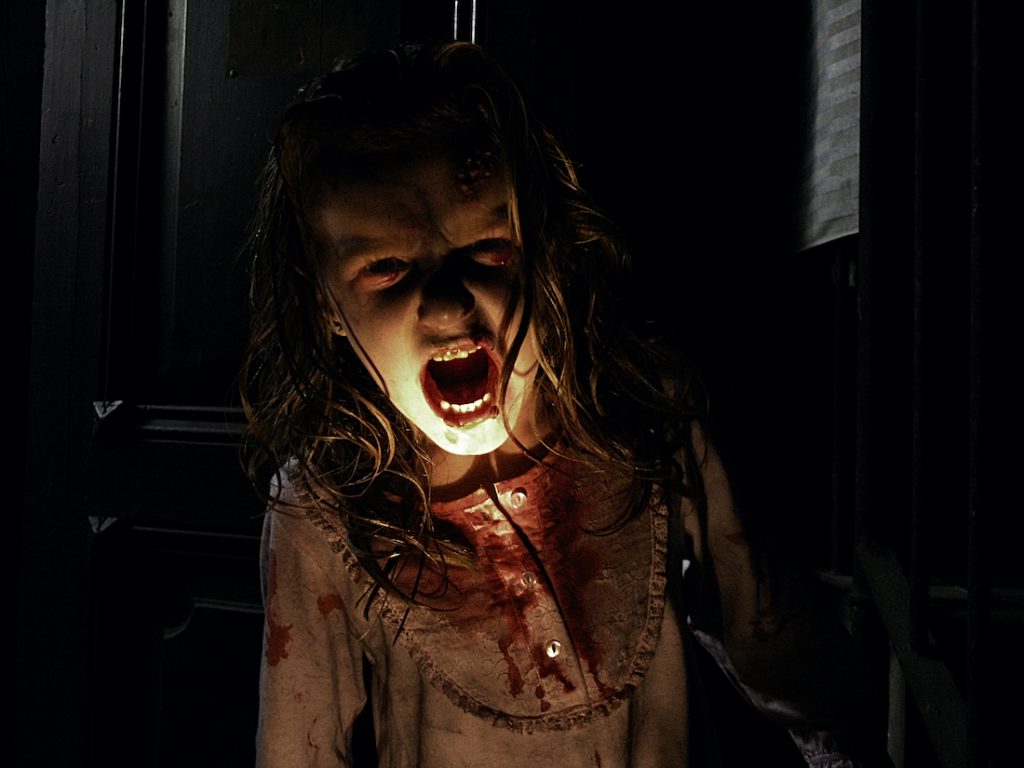
Though [Rec] executes its horror elements extremely well, some of the plot twists are overly supernatural for my liking. Balaguero and Plaza drop a tantalising trail of Hansel and Gretel clues, suggesting an explanation for the contagious disease. Hints are casually suggested including a dog infected with rabies, a vacant penthouse apartment, and vague dialogue regarding an unidentified Columbian girl. However, the narrative takes a sudden detour suggesting a religious explanation for the virus. It’s admirable the filmmakers intended on adding a unique and unexpected explanation to the narrative. Unfortunately, one would argue the execution is rather unfulfilling. The premise of [Rec] is grounded so much in reality, when the paranormal overtones occur it’s rather unengaging. As the otherworldly themes suddenly arise in the final moments, they are never sufficiently explored to satisfy the questions that they raise.
Naturally, Hollywood couldn’t leave a stone unturned and [Rec] was remade in the US as Quarantine (2008), then spawned several sequels. While they each adopt a different approach from the last, none of them are as excellent as their source material. Although the premise may be derivative of other movies and the handheld style isn’t unique, [Rec] remains an engrossing and entertaining experience. Unlike many films that attempted this approach and failed, [Rec] captures the true terror and uncertainty of its characters. During its short runtime, it contains a high scare rate which becomes increasingly relentless towards the finale. Admittedly, the ending didn’t satisfy on a dramatic level. However, it’s easy to overlook this minor flaw due to its consistent energy. Following The Devils Backbone (2001) and The Orphanage (2007), [Rec] is another chilling gift from Spain for horror fans.
If you enjoyed reading this article, please consider buying me a coffee.
SPAIN | 2007 | 78 MINUTES | 1:85:1 | COLOUR | SPANISH

Arrow has succeeded in giving [Rec] a fine transfer. There are two variations of the main feature to choose from: the “Theatrical Version” presented in 1080p running at 24fps, and the “Production Version” is presented in 1080i running at 25fps. Both options are presented in the original aspect ratio of 1:85:1 with no discernible differences between the two. Although it was captured with HD cameras, the intentional camcorder effect is a matter of realism versus practicality. When the scenes are well lit, colours and details are beyond superb. During the close-up sequences, facial features and clothing patterns lead from the screen. Whereas set pieces, such as the tiled flooring inside the apartment complex boasts an incredible amount of detail. Once the lighting diminishes and the brightness and contrast are reduced, inky blacks are almost impenetrable. Unfortunately, it does present a high level of noise. However, it retains the authenticity of the director’s intended.
With optional English subtitles, [Rec] is presented in Spanish DTS-HD 5.1 Master Audio and LPCM 2.0 Stereo audio tracks. After listening to both audio options, the 5.1 mix is incredibly robust, featuring aggressive and subtle use of the soundstage. Atmospheric effects are prominent from the start, most notably during a scene as Angela enters the fire station’s dining hall. As the firefighters are eating every piece of silverware can be heard through the rear channels. The range is incredible, especially during raucous scenes as every scream and shriek is registered at a glass-shattering frequency. The bass is utilised effectively, as several whirring helicopters circling the apartment provide superb rumbles from the subwoofer. Additionally, the LPCM 2.0 Stereo is incredibly accurate, using the camera’s built-in mic as the sound source. Subtleties such as the clarity of dialogue increases as the camera gets closer to the characters. There are several moments of intentional audio distortion to be found as the camera suffers from damage providing an authentic effect.
Admittedly, it’s difficult to recommend the 5.1 Master track for a movie that strives for authenticity. The multi-channel offering opens up the soundstage and creates an incredibly cinematic atmosphere. However, the 2.0 Stereo track remains faithful to the source of the sound. Nonetheless, both audio options serve the visuals well, using the sound to heighten the tension.

directors: Jaume Balaguero & Paco Plaza
writers: Jaume Balaguero, Paco Plaza & Luiso Berdejo
starring: Manuela Velasco, Pablo Rosso, Ferran Terraza, Jorge-Yamam Serrano, David Vert, Maria Lanau, Claudia Silva, Carlos Lasarte & Javier Botet.
[REC] is out now on Blu-ray and available to stream on Arrow.
